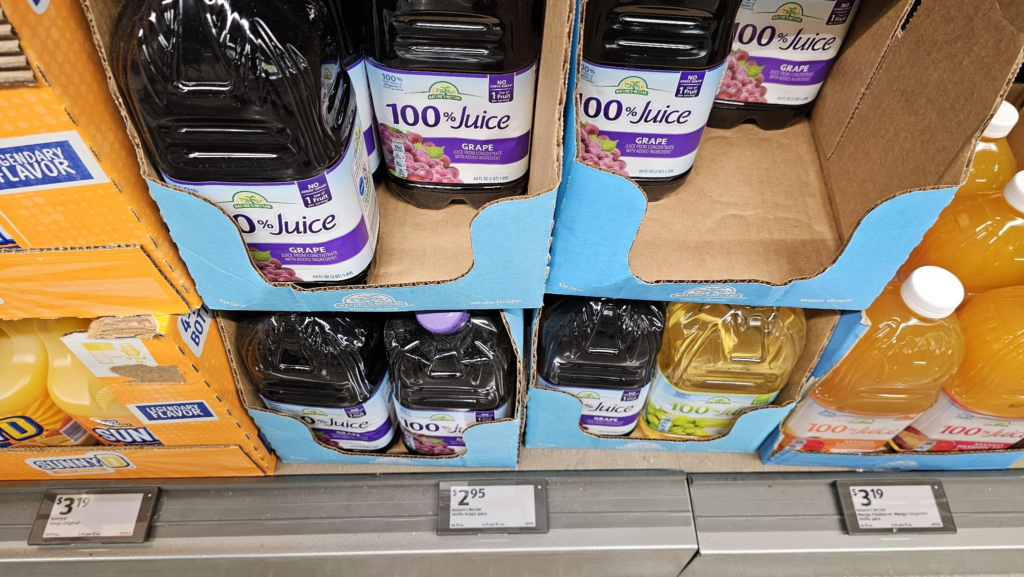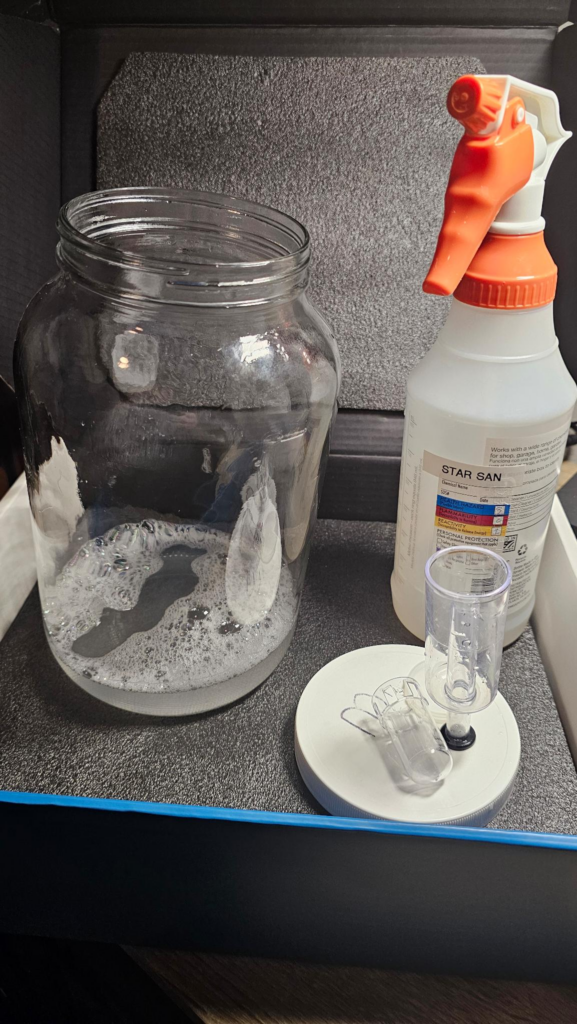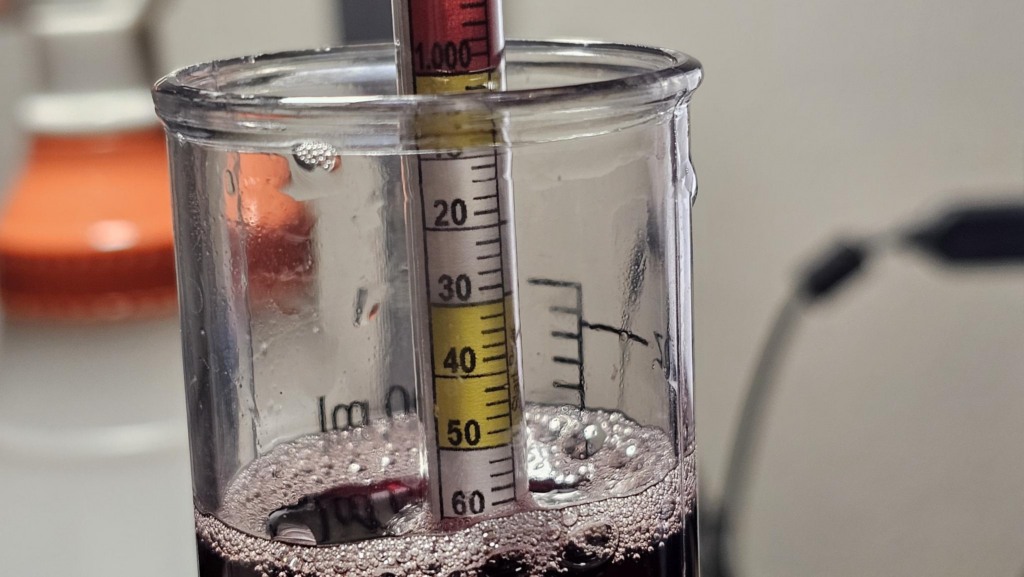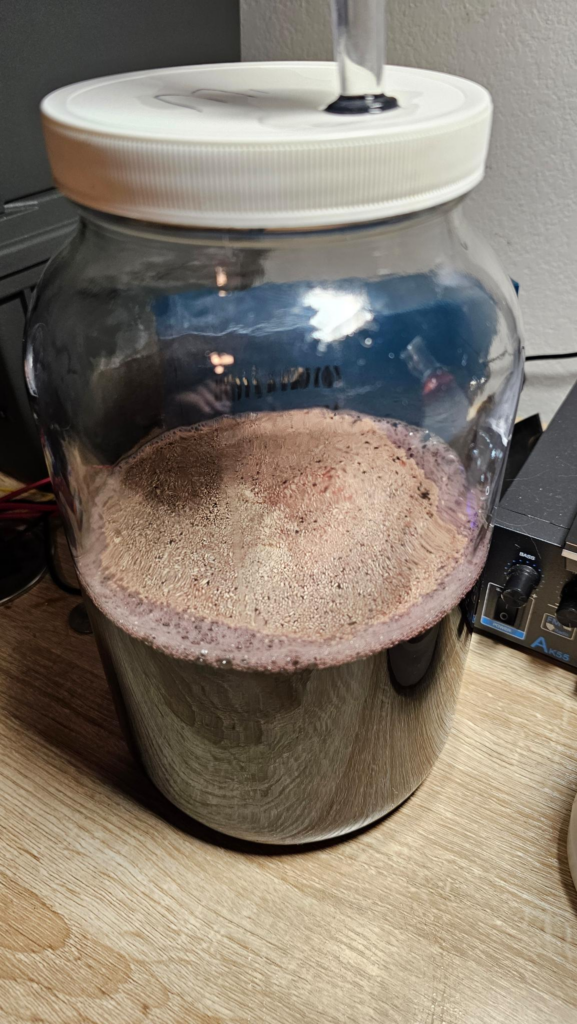It’s August here in Texas, and I decided to write a blog that shouldn’t come out for another few months. I wanted this to come out around a significant date for prohibition, but I don’t have the patience.
I got to reckoning with an old Midwestern pal about some good ol’ moonshinin’. The story started by recalling me, an 18-year-old boy, who could go to war but not drink a beer. I recalled how difficult it was to get my hands on a beer.
I remember my 19th birthday, a few friends provided a bottle of Boone’s Farm wine and it was a great time.
I told my friend that, if I knew what I know now back then, things would have been so different. Probably for the worse if we’re honest. I told him I can make a wine out of a bottle of grape juice and a packet of bread yeast. Most people are surprised about the complexities of brewing, but remember, yeast exists all over in nature and everything rots — we just need to control the how it rots.
Follow Along @ Home!
Please note that what I’m sharing here is 100% legal for me to do, I’m an adult (dubious) of legal drinking age, producing less than 200 gallons per year in my own home for my own consumption. This isn’t moonshine by any stretch, it’s just wine. I’m not a lawyer, I’m not your lawyer, and this can still get you into a bind I’m sure. The Litigious States of America!
Gather Supplies
- A half gallon jug of juice, without preservatives
- Juice from concentrate is fine, water is fine, ascorbic acid is fine. Avoid anything with “sorbate” in the name. It’ll work, it just sucks to get working
- Bread Yeast, really any will work
PROTIPS: You do not need to follow these, but they take prison wine and elevate it a touch.
I’d also suggest the following if you want to change some variables with the wine:
– Stick with grape, cranberry, apple etc. Stay away from citrus juices, like orange juice. The acid will make a nasty flavor.
– A hydrometer and test jar. You can do this a bit safer and you feel like a damn scientist. Don’t use a PROOF hydrometer or refractometer for this, one is the wrong scale and the other sucks when sugar remains in solution.
– You can optionally get diammonium phosphate (DAP) as a yeast nutrient. This can overcome some of the preservatives.
– An Airlock
– Starsan
– A fermenter
– Sugar, white works for less flavor impact, brown (light or dark) is better in ciders, if you want to boost ABV%. This does knock down the flavor a tad, for the snobby prison participants among us.
Let’s go shopping!
These are the prices I paid, at ALDI, in August 2024. It’s the cheapest place I could think to go. Your prices will likely vary as prices double.

For 99c, I picked up a thing of “Active Dry” yeast. It was a three pack, so dumping the entire thing into your recipe means you’re 33c in.

THIS BOTTLE SAID CONCENTRATE SO I FUCKING STARED AT IT FOR THREE HOURS BEFORE THE STORE CLOSED AND THEY ASKED ME TO LEAVE. THEY WERE POLITE ABOUT THIS AND TOLD ME THAT IF I MENTION THEM BEING POLITE THEY WOULD NOT PRESS CHARGES.

Thanks to it being Texas, you don’t have to pay taxes on food products. Some people complain and say “You can’t buy alcohol at 2am”, or “they make it up in a sin taxes!” Psh, not if you have $3.94 and a week to wait!
Step 1: Prep
NOTE: You can just make this by dumping out some of the juice, and dumping in a packet of yeast, and burping it. I’ll explain as we go, but I have access to some other equipment so I’ll be using that.
CLEAN! Make sure you clean any and all equipment you will use. If you’re dumping the yeast into the bottle, nothing to clean — if you’re using a fermenter, test jar, hydrometer, spoons to stir, airlocks, anything that will come into contact with it. Clean it, use a brewery grade sanitizer after, like StarSan.

Here, I have the 1 gallon fermenter I’ll use and the airlock sitting in some StarSan. Let it sit on there for a bit, it’s basically just sugar free coke (phosphoric acid is the main part of it, people have drank it to no ill effect, but don’t do it).
Optional Step 1a
Measure the specific gravity of the grape juice, don’t add the yeast yet and don’t shake it up too much. Bubbles make it a pain to read.

The grape juice, with nothing added to it, is about 1.062. Let’s assume it ferments down to typical wine levels: 0.995, we can do some napkin math:
(1.062-0.995)*131.25 = ~8.79% ABV final product. That’s no Four Loko, but it’s also 64 oz vs 20.
Step 2
Dump your juice into the fermenter. It would be wise to shake it up a lot to introduce a ton of air. The yeast thrive on this and work faster. You do NOT want to introduce air later.
PROTIP: Add DAP at this point if you have it and want to add it for a more vigorous fermentation — you may also consider making a yeast starter if you have an erlenmeyer flask and a stir plate.
You can also add your sugar(s) at this point if you’d like, but remeasure the specific gravity so you can determine if it is done fermenting and predict ABV. Once fermentation start, specific gravity is meaningless until the end.
Step 3
Pitch your yeast! Dump an entire packet on the top. No need to stir.

Step 4: Wait
For better results, put the container in a dark area, like a closet. You also want to do your best to keep the temperature stable for the next week or so. Fermentation is usually happy between 65-75F, but what is worse than poor temp is poor temp control.
Don’t ferment in the fridge, if it happens it’ll take forever. Don’t ferment in your garage, it’s likely too hot or too cold. A closet is fine. The odor it will give off is extremely mild if noticeable and can be compared to bread. I find it really pleasant, but I also grew up in the Midwest, so maybe it just reminds me of home.
PROTIP: If you have an empty chest freezer laying around and an InkBird temp controller, you can modify the freezer into a perfect fermentation environment.
IMPORTANT: If you are fermenting this in the bottle, you have a few options:
- Crack the lid twice a day, more if it seems to be under pressure. Yeast drinks sugar and farts CO2 and alcohol. Never ferment in a glass container if it is sealed. Plastic is best, or glass with a blow off tube or an airlock.
- If at the end you get a product that smells bad, discard it. A few things can happen:
- Wild Yeasts: It’s everywhere, and it is generally safe, but it can make weird flavors. But we’re using bread yeast, so who cares!
- Vinegar smell: It’s actually vinegar. You trapped a fruit fly in the jar, this is how red wine vinaigrette is made. You can probably make a salad or something, not sure, never did this.
- Foot odor, death, litterbox, etc: Just pour it out.
- Weird colors: Pour it out, it could potentially be safe, but it isn’t worth getting botulism.
A note about blindness
The government convinced easily manipulated people back in 2020 1920 that homemade alcohol production causes blindness.
That’s good, because it can. If you follow my instructions, you will end up with an interesting mix that will include ethanol (what you want) and methanol (what makes you go blind).
Grab a beer! It has both alcohols in it.
Grab wine! It has both alcohols in it.
Grab a spirit made with a still and cleaned up to 100% ethanol with molecular sieves in an environment without humidity (since ethanol is happy at 95%+5% water) — Welp, this is just ethanol.
Methanol is interesting, in small doses, it can blind you. The cure for acute methanol poisioning, if caught before symptoms appear, is “medical beer” — your body actually processes ethanol and excretes methanol.
Note: I’m going to make this, and I’m going to drink it. This is not entirely down to be being a badass either, I have no fear because I’ve read extensively about it, hundreds of hours over the past 15 years or so, and I’ve made it before, and will again.
Methanol becomes more of a concern when you distill alcohol, and you do not discard foreshots. We’re not doing that here, so no worries.
See you in a week or so for the followup!

Leave a Reply